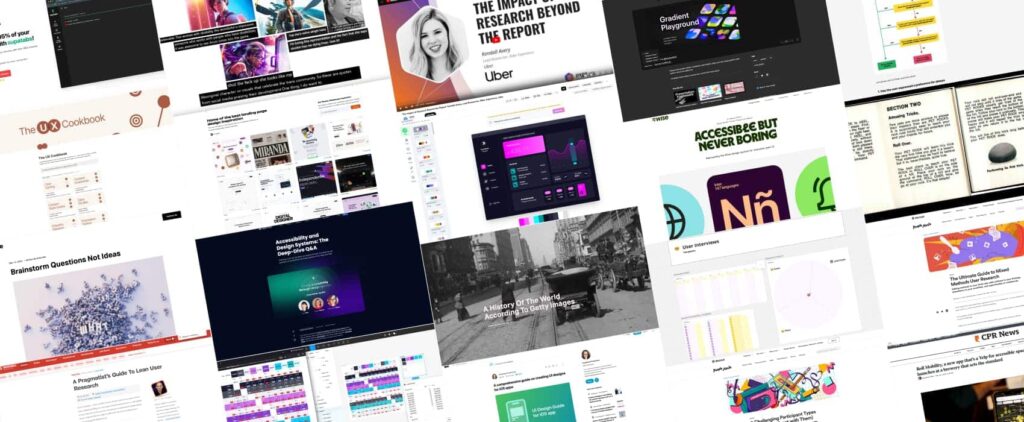
A Glimpse Inside: The Daily Life at a Web Design Company
The Real World of Web Design: Insights and Daily Operations
Welcome, curious explorer, to the heart of creativity, innovation, and pixels! Today, we invite you to step behind the scenes and experience a day in the life of a professional web design company. Get ready for a journey into the world of colors, codes, and collaboration as we unravel the secrets of what goes on behind the curtain.
Chapter 1: Morning Kickoff – The Creative Brew
The day at a web design company often starts with a burst of creativity. Picture this: a cozy office adorned with inspirational quotes, the hum of computers, and a team of passionate designers sipping their morning coffee. The day kicks off with a creative brew – a team meeting to discuss ongoing projects, brainstorm new ideas, and align everyone’s vision.
The Design Think Tank
Design is a dynamic field, and every project brings its unique challenges. During the morning kickoff, designers collaborate in a design think tank, sharing insights, discussing trends, and throwing around ideas. It’s a melting pot of creativity where diverse perspectives come together to shape the day’s agenda.
Chapter 2: Dive into the Design Dungeon
Armed with inspiration and a clear vision, it’s time for the designers to dive into the design dungeon. This is where the magic happens – where concepts take shape, wireframes are crafted, and the first strokes of design grace the canvas. Professional Web design companies in your local areas often use advanced design tools to bring ideas to life, ensuring that every pixel is in its perfect place.
The UX/UI Symphony
In the design dungeon, UX/UI designers work in tandem to create seamless and visually pleasing user experiences. The focus is not just on aesthetics but also on functionality. It’s about ensuring that the user journey is smooth, intuitive, and aligned with the client’s objectives.
Chapter 3: Development Dance – Where Code Meets Creativity
As the design flourishes, it’s time for the development dance. Developers step onto the stage, translating visual concepts into lines of code. This intricate dance requires coordination and communication between designers and developers to ensure that the envisioned design is faithfully brought to life. Here are some of the intricacies that website designers must be involved in:
Responsive Design
With all the various devices present today, it is essential to prioritize Mobile first responsive web design. Developers work on ensuring that the website functions seamlessly across various platforms – from desktops and laptops to tablets and smartphones. It’s a delicate dance of code that adapts to the rhythm of the user’s preferred device.
Front-End Development
Front-end development is focused on creating the visual and interactive elements of a website. It involves using languages such as HTML, CSS, and JavaScript to build the user-facing aspects of a site, making it both visually appealing and interactive.
Back-End Development
Back-end development revolves around server-side development and data management. It involves working with server-side languages, databases, and server management to ensure the functionality and performance of the website.
Visual Design
Visual design encompasses elements such as visual hierarchy, color theory, and typography. It plays a crucial role in creating an engaging and aesthetically pleasing user experience.
Website Content
Website content includes content strategy, UI/UX design SEO (Search Engine Optimization), and copywriting. It focuses on creating compelling and relevant content that not only attracts visitors but also ranks well in search engines.
Content Management Systems
Various content management systems like WordPress, Drupal, and Joomla are commonly used in web design and development. These systems provide a framework for creating and managing digital content, making it easier for designers and clients to collaborate effectively.
In summary, understanding these key areas forms the foundation for effective collaboration between clients and web designers, leading to the creation of successful and impactful websites.
Chapter 4: Client Interlude – Collaboration and Feedback
The design is a collaborative art, and client input is invaluable. The midday interlude often involves meetings or consultations at web design agencies, where designers and developers showcase their work, participate in productive discussions regarding feedback, and enhance the design to align with the client’s vision. It’s a moment of collaboration where the client becomes an integral part of the creative process.
The Importance of Client Collaboration in Web Design
A good website is a collaborative art, and client input is invaluable. The midday interlude often involves client meetings or presentations. Website designers and developers showcase their progress, discuss feedback, and iterate on the design based on the client’s vision. It’s a moment of collaboration where the client becomes an integral part of the creative process.
Iterative Symphony at a Web Design Company
The design process is rarely a linear journey. Iterations are the norm, and client feedback fuels the iterative symphony. It’s a back-and-forth exchange, a dance of ideas that leads to a design refined and polished to perfection.
Chapter 5: Afternoon Resurgence – Refuelling Creativity
After a satisfying client interlude, the team resurges for the afternoon session. This is the time for a creative refuel – perhaps a team-building exercise, a design workshop, or a brief escape to recharge minds. The goal is to maintain the energy and enthusiasm that propels the team forward.
Coffee Break Conversations
The afternoon often sees the team gathered around the coffee machine or in cozy nooks, engaging in coffee break conversations. These casual exchanges spark new ideas, foster camaraderie, and contribute to the vibrant culture of the web design company.
Chapter 6: QA Choreography – Perfecting the Performance
With the design and development phases nearing completion, it’s time for the QA choreography. Quality Assurance teams’ step in to meticulously review every aspect of the website. They check for functionality, performance, and cross-browser compatibility. It’s a choreographed routine to ensure that the final performance on the web stage is flawless.
Quality Assurance in Web Design and Development
As the design and development phases of your website near completion, it’s crucial to ensure that the final product meets the highest standards of quality. This is where the Quality Assurance (QA) process comes into play. QA teams play a pivotal role in meticulously reviewing every aspect of the website to guarantee its flawless performance on the web stage.
Functionality and Performance Testing
The QA team conducts rigorous testing to ensure that all functionalities of the website work as intended. This includes testing interactive elements, forms, navigation, and user interfaces.
Performance testing is carried out to assess the website’s speed, responsiveness, and overall user experience. This ensures that visitors have a seamless interaction with the site.
Cross-Browser Compatibility
With the multitude of web browsers available, it’s essential to ensure that your website functions consistently across different platforms. QA teams test the website on various browsers such as Chrome, Firefox, Safari, and Edge to ensure cross-browser compatibility.
Choreographed Routine
The QA process is akin to a choreographed routine, where every step is carefully planned and executed to achieve perfection.
It involves meticulous attention to detail and a systematic approach to uncover and address any potential issues before the website goes live.
Final Performance on the Web Stage
The ultimate goal of the QA process is to guarantee that the website’s final performance on the web stage is flawless.
By conducting comprehensive QA testing, any potential issues can be identified and rectified, ensuring that the website delivers an exceptional experience to its users.
In conclusion, the QA choreography carried out by a professional website design company is essential to ensure that your website is not only visually appealing but also functions flawlessly across different browsers and devices, providing an optimal user experience. By engaging the services of a reputable web design agency, you can guarantee that your website meets the highest standards of quality and performance.
Chapter 7: Sunset Showcase – Presenting the Masterpiece
As the day winds down, the team gathers for the sunset showcase. This is the moment of glory – the grand reveal of the masterpiece. Designers, developers, and QA teams showcase the website, presenting the culmination of their efforts. It’s a celebratory moment, a virtual curtain call for a project brought to life.
The Launch Celebration
The successful completion of a project calls for a launch celebration. The team comes together, virtually or in person, to toast to their collective achievements. It’s a time to reflect on the challenges conquered, the creativity unleashed, and the collaborative spirit that defines the web design company.
Chapter 8: Post-Launch Reflection – Continuous Improvement
The day may be drawing to a close, but the journey of a web design company is ongoing. Post-launch reflection involves evaluating the project’s success, gathering client feedback, and identifying areas for improvement. This reflective process fuels a culture of continuous learning and growth.
The Learning Ensemble
Digital design is an ever-evolving field, and the learning never stops. The team engages in a learning ensemble – sharing insights, attending workshops, and staying updated on the latest design trends and technologies. It’s this commitment to learning that keeps the web design company at the forefront of innovation.
Conclusion: Curtain Call on a Creative Day
As the curtain falls on a day in the life of a web design company, one thing becomes clear – web design is not just a job; it’s a passion-fueled journey of creativity, collaboration, and continuous improvement.
From the morning kick off to the sunset showcase, every moment is a dance of pixels, a symphony of code, and a celebration of the art of web design. So, as you bid farewell to this behind-the-scenes experience, remember that the next digital masterpiece is just a sunrise away. Happy designing!
Reference:
Web Design and Development Keywords
When it comes to web design and development, several keywords play a crucial role in understanding the process and components involved. Here are some key terms related to web design companies, web development, visual design, website content, CMS (Content Management System), and seo (search engine optimization):
Graphic Design Companies
Designing Firms: Companies specializing in creating and designing websites for clients.
UI/UX Design Company: A web design company is a specialized firm that focuses on creating and designing websites for clients. They work closely with clients to understand their goals and objectives, and then use their expertise to bring those visions to life. With a team of talented designers, developers, and strategists, a web design company is able to deliver high-quality websites that not only look great but also perform well.
Digital Agencies: Businesses offering a range of digital services including web design and development.
Internet Design Agencies: Companies focusing on user experience (UX) and user interface (UI) design for websites and applications.
Creative Studios: Entities providing creative design and development services for digital platforms.
Web Development
Front-end Development: The process of creating the visual and interactive elements of a website using languages like HTML, CSS, and JavaScript.
Back-end Development: The server-side development involving databases, servers, and applications to ensure functionality and data management.
Full-Stack Development: Involves both front-end and back-end development, covering the entire spectrum of web development.
Visual Design
Visual Hierarchy: The arrangement or presentation of elements in a way that implies importance.
Color Theory: Understanding and implementing the psychological effects of different colors in design.
Typography: The art and technique of arranging type to make written language readable and appealing.
Website Content
Content Strategy: Planning, development, and management of content to meet business goals.
SEO (Search Engine Optimization): Techniques used to optimize website content for better visibility in search engine results.
Copywriting: The process of writing content for the purpose of marketing or advertising.
CMS (Content Management System)
WordPress : A popular open-source CMS for website creation and blogging.
Drupal : Another open-source CMS known for its flexibility and scalability.
Joomla : A CMS that enables users to build websites and powerful online applications.
These keywords are essential for understanding the various aspects of web design and development, and they play a significant role in the collaboration between clients and web designers.



























